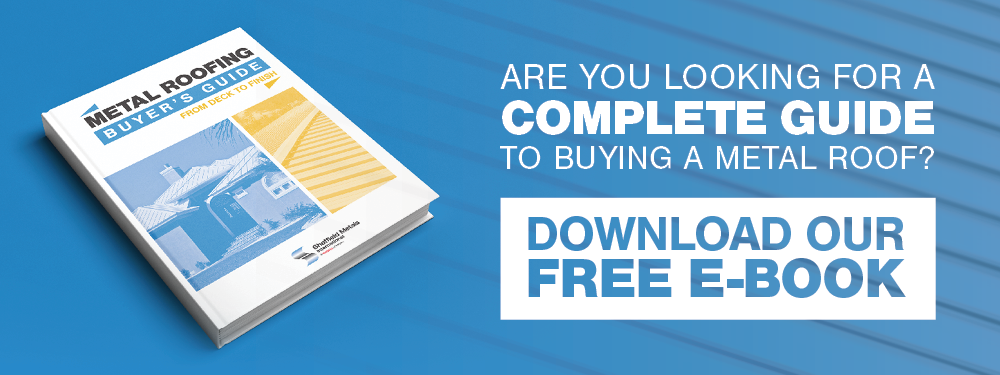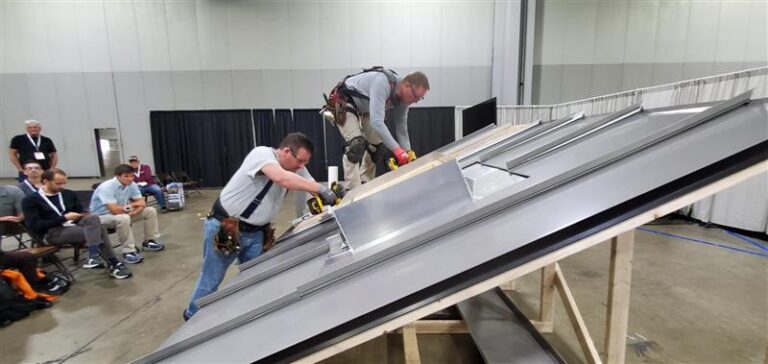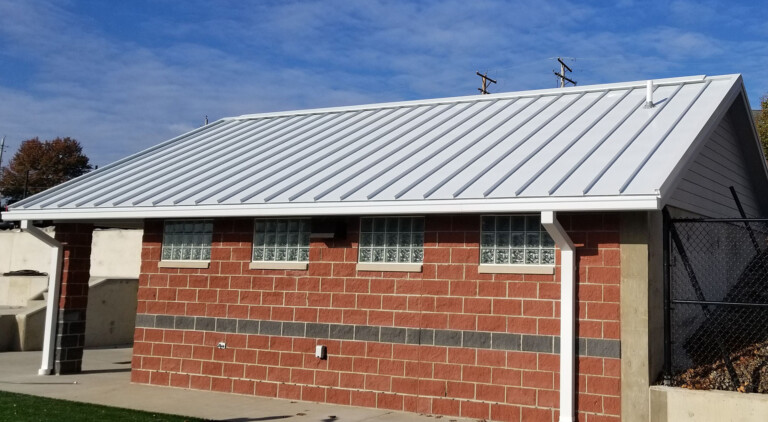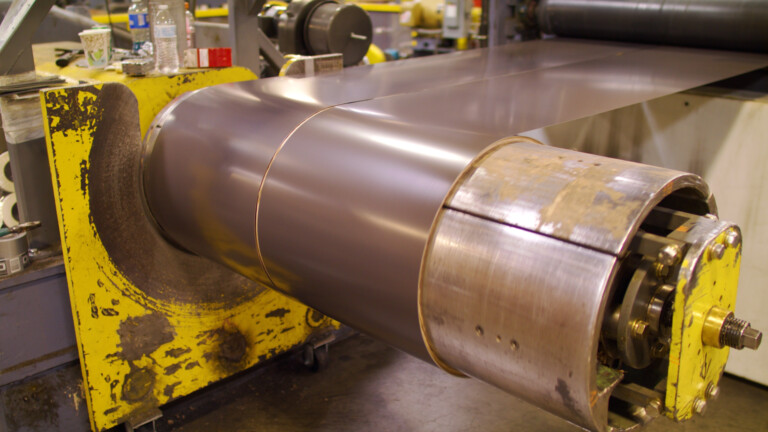Metal Roofing Problems: 7 Common Issues That Could Affect Your Roof
Knowing about the problems that could occur on a metal roof system will help prevent issues from the very start, resulting in less time and money necessary for repairs.
No product in the world is perfect, no matter how much money it’s worth or how well it’s cared for. You could be in a lucky situation where nothing ever goes wrong with something you’ve purchased or you could experience one or more problems at any given time. It all just depends. Metal roofing is no different.
While there are variables affecting the problems that could occur with a metal roofing system, sometimes things just happen that are beyond human control. This might not be the answer you’re looking for, but just know that there tend to be fewer long-term problems associated with metal roofing than asphalt shingles or concrete tiles.
Here at Sheffield Metals, we think it’s important to educate consumers about the potential common problems with a metal roof that could very easily happen or not happen. In this article, we’ll discuss:
- The top seven common problems that could occur with a metal roof
- Potential ways and methods to remedy or avoid the problem
- Important considerations to keep in mind to that’ll help bypass some problems
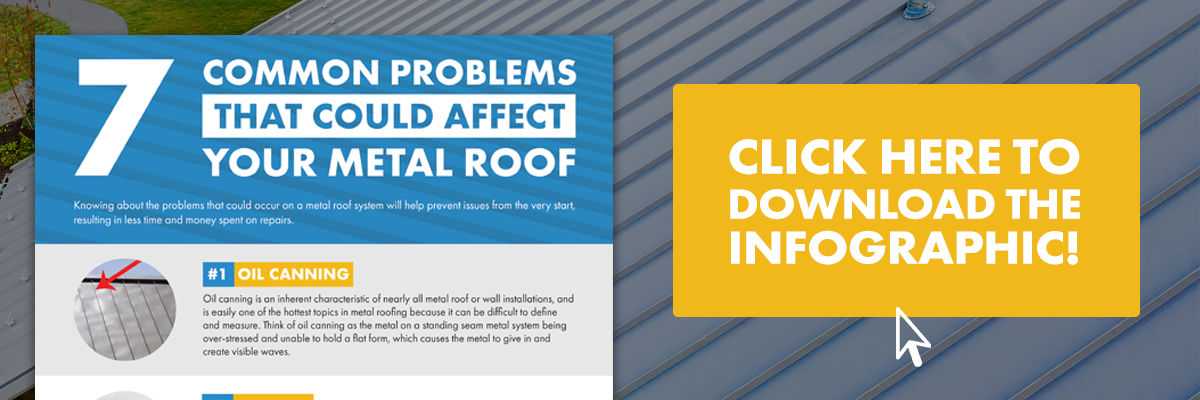
Top 7 Most Common Metal Roofing Problems
#1: Oil Canning
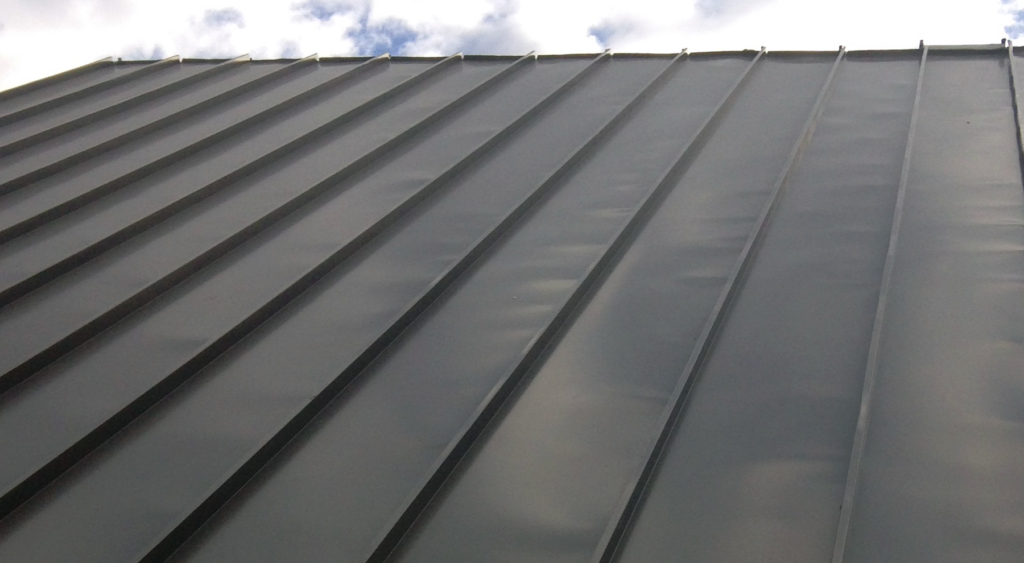
According to the Metal Construction Association, oil canning is defined as:
“Visible waviness in the flat areas of metal roofing and metal wall panels. In technical terms, oil canning is referred to as elastic buckling (more commonly known as “stress wrinkling”). It can occur in any type of metal panel: steel, aluminum, zinc, or copper.”
To be clear, oil canning is an inherent characteristic of nearly all metal roofs/walls. Think of oil canning as the metal on a standing seam metal system being over-stressed and unable to hold a flat form, which causes the metal to give in and create visible waves. Oil canning is easily one of the hottest topics in metal roofing because it can be difficult to define and measure. There are a number of reasons that oil canning can occur, including:
- Over-production—such as extreme pressure during the coiling of the metal
- Frequent stress from coil slitting (cutting) and rollforming panels
- Inadequate space allotted for thermal expanding and contracting of the panels
- Changes to the structure’s original form that puts tension on or moves the panels
- Improper usage, handling, and storage by installers
- For example, if a panel is not installed according to the specified dimensions of the structure, it could generate oil canning
- Contractors should always follow industry-standard manufacturer installation details
Luckily there are ways to reduce the likelihood of oil canning, some of which include:
- Purchasing a thicker metal
- Using a rib roller profile to break up the amount of flat space on a panel
- Choosing a low-gloss or matte finish to reduce reflectivity, which can decrease the visibility of oil canning
- Buying tension-leveled (stretched) metal, as this coil is already stretched beyond the point where it cannot return to its original state
- Install the roof over a flat “in-place” roof deck
- Most importantly: Choose a skilled and experienced installer who is knowledgeable about the ways to avoid oil canning
#2: Leaking
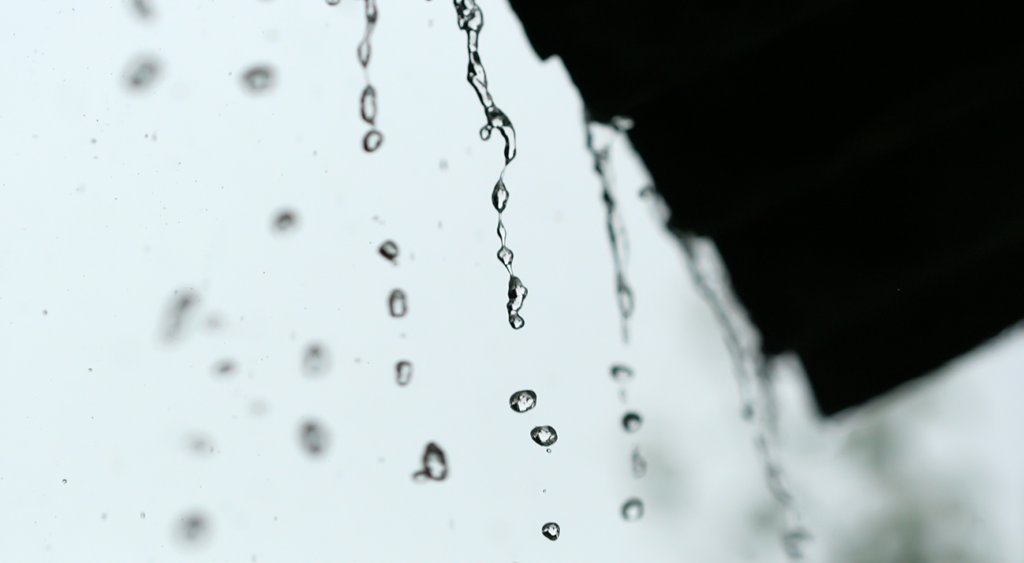
Let’s be honest: No one wants a leaky roof. In addition to having to pay extra for the roof to be fixed in most cases, a leak can also ruin other valuable items in your home or building. Metal roof leaks are a possibility; some of which are unfortunately out of our control and some of which are due to human error.
Common uncontrollable triggering events or causes that could lead to a leaking roof are:
- Driving rain
- Heavy or melting snow
- Ice damming (consistent freezing and thawing)
- Wind
- Structural damage
- Other weather occurrences
Unfortunately, there are also some situations where a leak could be due to installer error:
- Failed fasteners – The screws are either too tight, too loose, or off-center and allows water to enter at open spots.
- Failed seam – The seam, or side rib where two panels are connected, could be formed incorrectly or seamed improperly by the installer.
- Failed flashing – Flashing is the material, typically metal, added to prevent moisture from entering at joints or additions on a roof, like pipes, chimneys, or valleys. Since they are add-ons requiring sealants and precise installation, flashing points could easily be the source of a leak. Actually, when a standing seam metal roof has a leak, it is commonly at some type of flashing area.
- Failed sealant or butyl tape – Sealants and butyl tape are used to seal out water, dirt, and other debris that could compromise a metal roof. If these are damaged, missing, or applied incorrectly, leaks could occur.
- Use of inadequate details – Ask about the details a contractor intends to use during the install of your metal roof. Do they match the manufacturer’s recommended details? If their installation details are not acceptable for a manufacturer’s weather-tight warranty, it’s also not adequate for your home or building. Involve yourself early on in the process and ensure your installer uses the manufacturer’s details.
Make sure you choose and partner with a reputable contractor with a good track record of quality installs, which will help reduce the likelihood of leaks springing up.
#3: Scuffing & Scratching
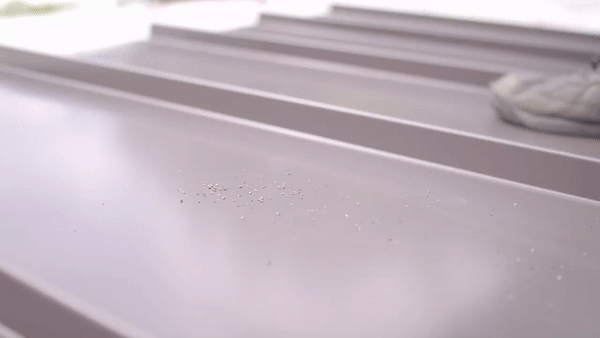
Like anything that has a paint system applied to it, metal roofing could be subjected to scratching or scuffing at any point during its lifecycle. Most manufacturers of metal coil take extra precaution to ensure the coil is not scratched during the slitting process, recoiling, or when it’s being transported to the buyer.
Additionally, most contractors and installers typically handle coils and panels with care during the rollforming and installation process. But there is always the possibility that one or more of these parties improperly handles the metal, leading to some kind of surface-level damage. This could happen when:
- The metal is improperly coiled or recoiled, which could cause the metal to rub together and strip the coating
- Edge guards are not used to protect the sheet edges in shipping
- Carriers do not handle the coil with proper lifting devices
- The coil goes through a rollforming machine and one of the components has malfunctioned or the coil inadvertently scraped up against a part of the machine
- Tools or other items have been rubbed against or dropped on a panel
- Panels are walked on, by contractors or otherwise, once installed and scuffed at heavy traffic spots, such as at flashing points or ladder entries (this is a common problem with acrylic-coated Galvalume, which requires special handling and care)
If you notice a scratch or scuff on a metal panel, especially one going all the way down to the metal substrate, bring it to the attention of the manufacturer or contractor. The majority of scratches can easily be fixed with a paint or touch-up pen designed to match the color of the roof. But if there is a gouge that goes down to the core of the steel, that piece of metal panel or flashing should be replaced immediately.
#4: Corrosion
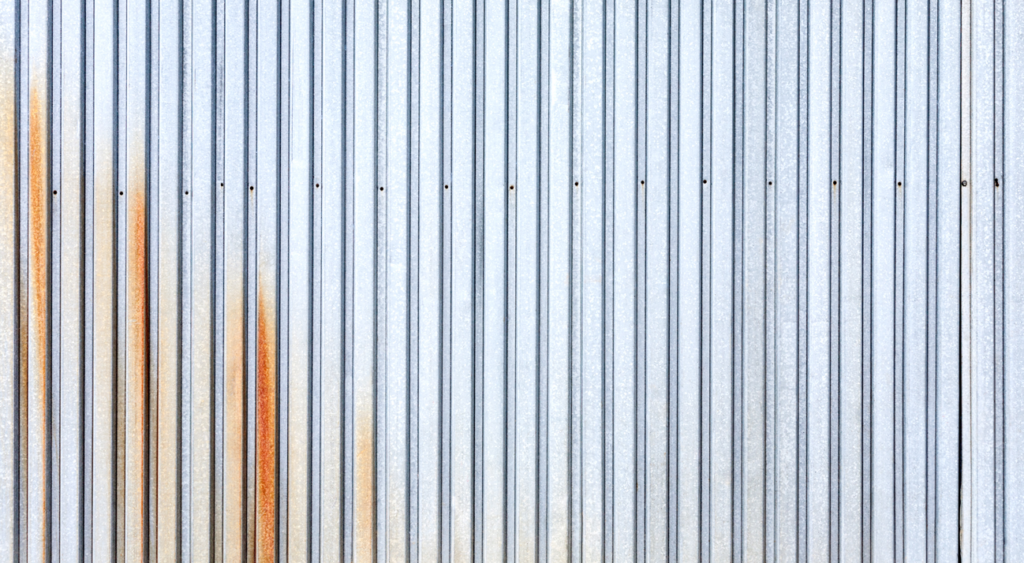
Many people choose metal roofing because it defends against corrosion and degradation for decades (typically 60+ years) which makes it the last roof they ever have to purchase. Manufacturers and contractors are able to effectively help you choose a metal material that will best stand up to corrosion in the environment your home or building is in.
Most metal roofs have protective paint systems or coatings specifically engineered to resist corrosion, but there are special circumstances that could occur, including:
- Underside corrosion – If the metal is improperly coated on the underside of the panel, corrosion could take place. This occurs when water molecules get trapped underneath between the panel and the insulation or underlayment, which can cause the metal to weaken if not coated. Also, underside corrosion could occur if you use a granulated underlayment or install right over a shingle roof because it could scratch the protective backside coating and cause the metal roof system to fail from the inside out.
- Saltwater corrosion – Homes or buildings close to the coast often don’t qualify for substrate or paint warranties because of saltwater’s effect on metal. There are types of metals that work better in coastal environments, including aluminum and zinc, but there is no guarantee it will last as long as a roof where there is no threat of saltwater. Make sure to read and analyze the warranty or product specs thoroughly to determine if you’re in a location that could be subject to premature corrosion.
- Dissimilar metals – When certain metals are put together, there could be a negative interaction that causes early corrosion that would not occur otherwise. We will talk more about dissimilar metals in the next common problem.
- Cut edges – Cut edges on a steel roof will experience edge creep, which is minimal rusting occurring at the cut edge. Many details in a standing seam metal roof have folds or hemmed edges that conceal the cut edge of the metal. A contractor can minimize the appearance of edge creep by using lap flashing, hemming exposed edges when possible, or using a paint pen on visible cut edges.
Corrosion will happen at some point in the lifetime of the roof. Whether it happens early on, or in 50 years, is dependent on being educated about the different metal types, paint systems, and the environments these work best in.
#5: Dissimilar Metals & Materials
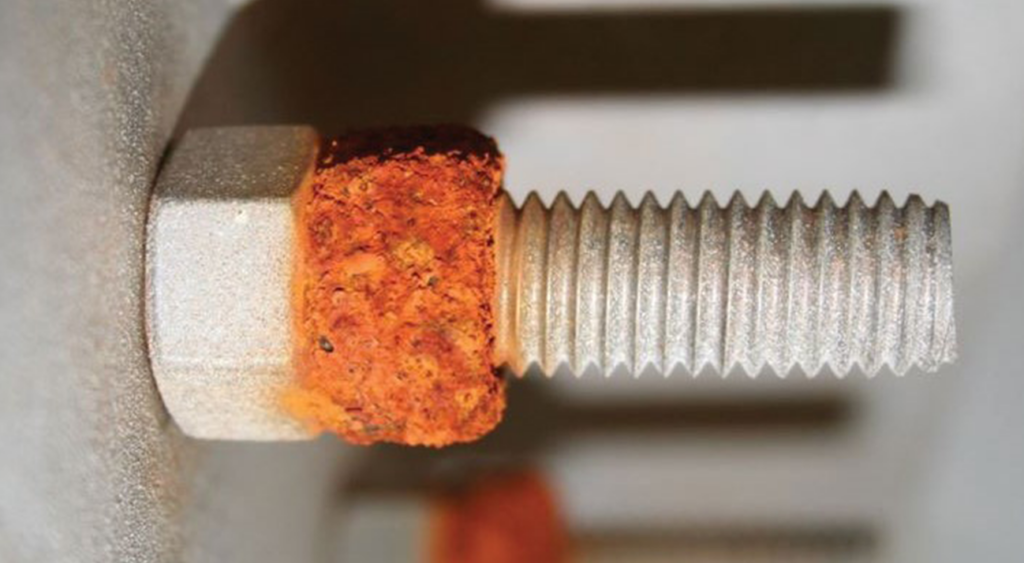
Combining different metals on a metal roof system can actually lead to interactions that could result in early degradation, staining, and potential failure of a system altogether. For example, Galvalume® roofing performs best when not in contact with specific materials, such as copper, bricks, treated lumber, iron, and concrete. If Galvalume is in contact with one of these and is then introduced to an electrolyte, such as water, it’ll lead to galvanic corrosion of the anode (the more active material that has its electrons taken away by the less active material and ultimately leads to corrosion).
Have a discussion with the contractor regarding the products that will be in contact with your metal roof and ask if the metal roof material you chose will react well to it. Or, read up on metals that are more likely to corrode due to galvanic reactions. Keep an eye out for the following potential products and their materials that could result in poor interactions:
- Panels
- Gutters
- Fasteners
- Rivets
- Flashing materials and lead pipe boots
- Trim
- Chimneys
- Fascia
- Drip edges
- Siding/wall materials
- Roof-mounted air conditioners or swamp coolers using copper drain pipes
- Other roofing systems, such as cedar shake shingles
#6: Chalking & Fading
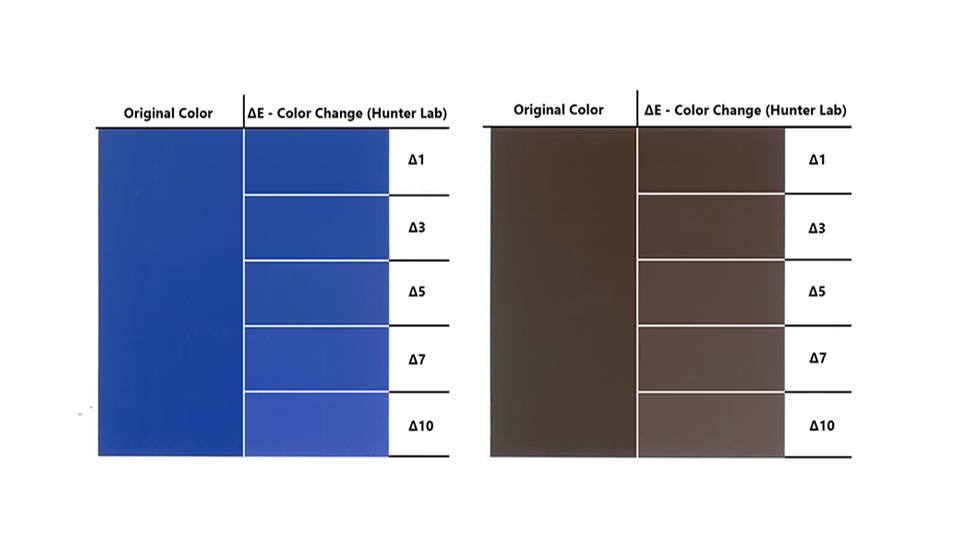
Whether you’re familiar with chalking and fading or not, it’s another one of those hot topics that could be a potential problem.
Chalking refers to the whitish residue that is visible on a painted or coated metal panel and is due to the paint resin breaking down from UV exposure.
Fading is when the pigment of the paint applied to the metal substrate breaks down (due to UV rays, water, pollution, chemicals, etc.), which causes a change in color. Uneven fading could happen as well because every panel on a roof isn’t always evenly exposed to the sun and other substances.
Chalking and fading will happen no matter where you live.
But the degree of chalk and fade truly depends on the environment and substances the roof is subjected to. Luckily, most reputable manufacturers offer paint warranties that cover chalking and fading exceeding a specified measurement over a period of time, which should be clearly defined in the warranty.
#7: Other Installation Error
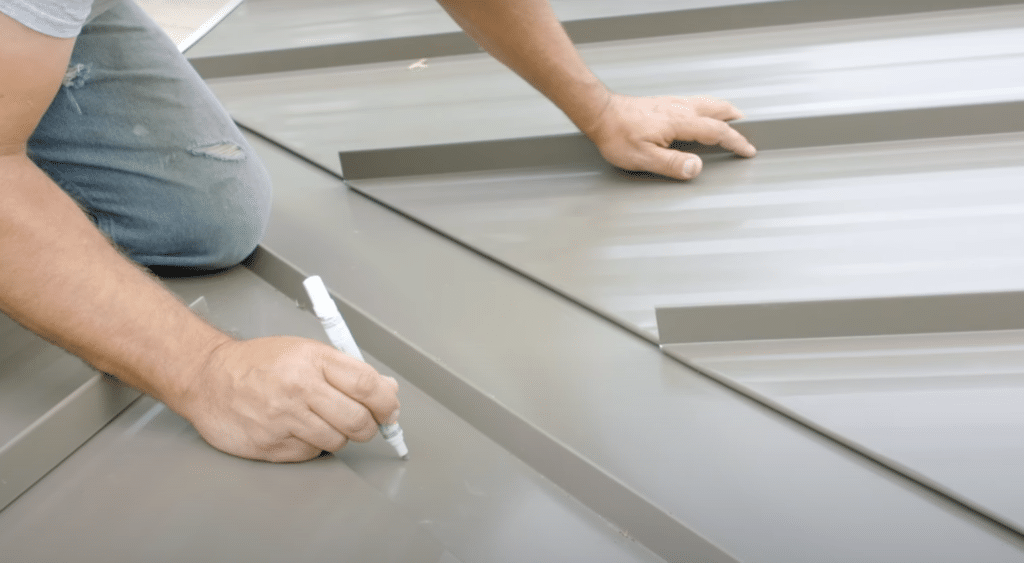
Miscellaneous problems that stem from installation errors, such as missing parts or accessories, loose screws, or poorly attached flashing, are sensitive subjects because it can be completely unpredictable. In the next section, we will offer ways to make sure you avoid the problems we’ve outlined, including choosing the right installer to deflect these miscellaneous install errors.
Important Considerations to Help Minimize Metal Roofing Problems
Now that you are aware of the seven most common and potential problems that could affect a metal roof, there are a number of considerations to keep in mind before and after you buy:
Choose the Right Metal Roofing Contractor
Unfortunately, there are some contractors and installers who are inexperienced or unqualified to install metal roofing, which is why finding and ultimately choosing the right contractor is so vitally important. To know if a contractor can perform to the highest standards possible, verify the following:
- They are licensed, insured, and in good standing with the building department
- They have proven experience installing metal roofing
- They are helpful, responsive, and able to answer your questions
- They provide detailed explanations of available products and install processes
- They have been recommended by family, friends, or neighbors who have used them as their installer
- If you don’t know anyone who has a metal roof, look for reviews and recommendations on referral sites such as HomeAdvisor or Angie’s List
- You can also contact the metal manufacturer to ask if they have any referrals in your area
Know Manufacturers That Make Quality Metal Products
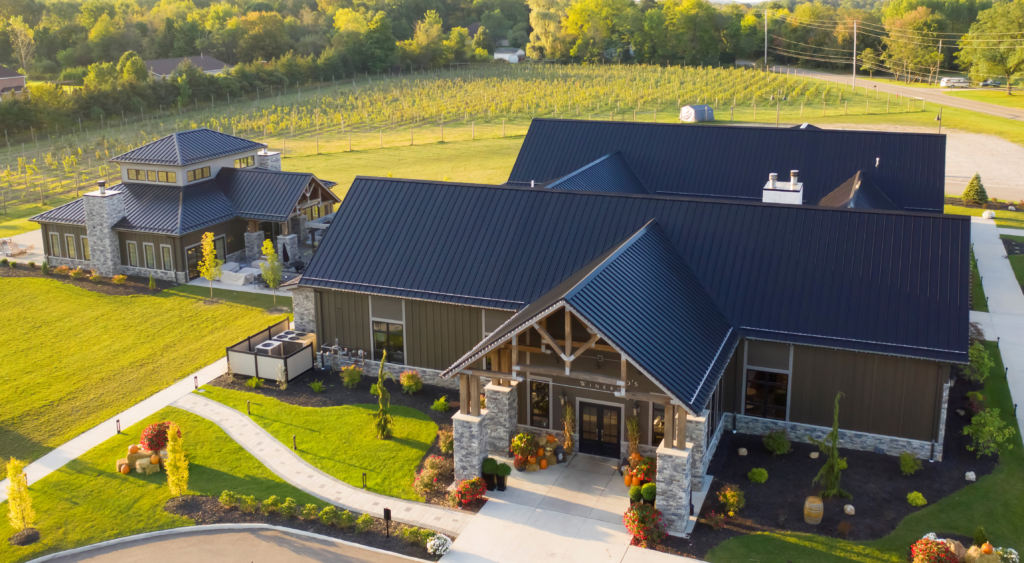
One of the best ways to cut down on metal roofing problems is to buy the materials from a reputable company that thoroughly tests its products and stands behind them with warranties. You also want to make sure the manufacturer’s products meet the standards set by the government and the industry’s governing bodies.
Know Your Roof & its Environment
You never know how much goes into purchasing a new roof until you actually go through it. Before you buy, know the following design considerations, as they could affect the panel profile you need or the material that will work best in your environment:
- Roof pitch (slope)
- For reference, standing seam metal roofing is not “one size fits all”. If you have a low-slope application (3:12 or less is the industry standard), it is important that you choose a mechanical system that is double locked. If you have a steep-slope application (3:12 or greater is the industry standard), snap-lock systems with a clip should be used.
- It’s imperative to check the manufacturer’s minimum slope requirements before installation.
- Square footage of the roof
- The number of flashing points there might be, such as valleys, chimneys, vent pipes, skylights, etc.
- Points on your roof that may collect water, moisture, or debris
- Parts of your roof that are in constant shade or exposure to the sun
- Already existing leaks or other issues that may or may not be fixed by a roof replacement
Do Your Research on Everything Metal Roofing
Everything discussed so far relates back to doing research. Research is key, both before you buy and even after you buy a metal roof. Know as much information as possible about issues that could arise, who you should contact in case it does, and always make the most educated decisions from what you’ve learned.
Final Thoughts on Common Metal Roofing Problems
No one can predict the future, but knowing about problems that could potentially occur with a metal roof system puts you one step ahead during the buying process. Be prepared, but also understand that some of the problems we outlined above might never even spring up. Remember:
- Ask for referrals when choosing a roofing contractor/installer
- Do not try to fix the problem yourself or without professional assistance
- Check your warranty and understand when something could be a legitimate claim
- Do routine checks to ensure there isn’t a compromise in the roofing structure
- Ask questions and remain educated on potential problems
At Sheffield Metals, we are here to help provide you with the information and the products you need to have a metal roof that lasts. Contact us today to speak with our experienced, knowledgeable metal roofing experts.
